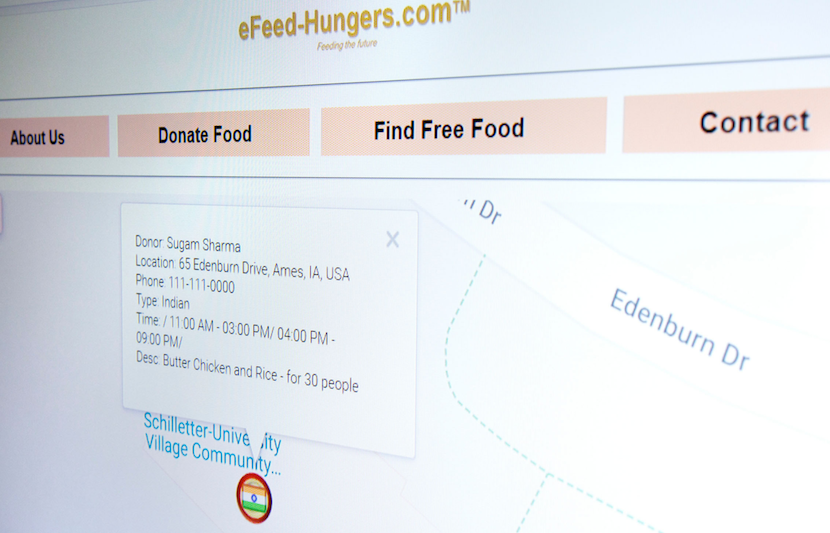A research team from Iowa State University has developed eFeed-Hungers, a mobile-friendly software designed to divert excess food to those in need.
The research is led by Sugam Sharma, a computer science expert and systems analyst in Iowa State University’s Center for Survey Statistics and Methodology, and is published in Resources, Conservation and Recycling and Telematics and Informatics.
Hunger and Food Waste
Growing up in India, Sharma witnessed hunger everywhere.
“It is really heart wrenching to witness a mother in shabby and torn clothes, holding her baby, come to you and ask for help because her baby hasn’t had anything to eat,” Sharma said in a statement. “This I have witnessed often in my life.”
After moving to the U.S. in 2006 to continue his education, Sharma realized India is not the only country with food insecurity.
Hunger is a worldwide problem. According to the United Nations, one in every nine people in the world are food insecure. This is troubling, especially as one-third of the total food produced around the world is wasted every year. In the U.S., food waste is even higher at 40 percent.
As he focused more deeply on his research on hunger, Sharma could no longer bear the profound contradiction and wanted to find a solution to use excess food to help the ones who don’t have enough to eat.
Finally, after nearly three years, Sharma and his team have developed a software prototype, eFeed-Hungers, to divert excess food to help those in need.
Social Network for Food Donations
On eFeed-Hungers, restaurants, grocery stores and individual donors can post excess food they have to donate. Likewise, food pantries, volunteer organizations, and any one in need can search for food in any region of interest, usually their nearby locations.
The software’s design allows for donated food to be taken to a public place, such as a food pantry or church serving free meals, for pickup and distribution. Donors can make a one-time or recurring donations by entering their information just once.
The software’s interactive map, which is based on the Google address library and is easy to use, flags the type of food available for pickup as well as the hours of availability.
“We wanted to make it as simple as possible, so people will not hesitate to donate,” Sharma said in a statement.
There is no scarcity of food. We see this as a way to take some of the food we’re wasting and save it by providing a channel to get the extra food to the needy.
This software will be available as a web application that will be fully responsive to desktop, laptop and mobile phone, he told The University Network (TUN).
“Almost everyone has a cell phone and the technology has the potential for a much wider outreach,” Sharma said in a statement.
The Next Step
In addition to continued tests of the prototype, Sharma and his team plan on implementing their software at Ames, their local community, in late summer or early fall. They are currently working on securing funding to provide education and outreach for restaurants, food pantries, churches and individuals interested in participating.
“We plan to implement the software in India too, but currently, our immediate focus is on my local community,” Sharma told TUN.
When expanding to other communities, Sharma and his team plan to engage academic institutions of a particular area to collect the data on users in their city. They plan to involve a group of students from local universities and a professor who will lead the team. Once verified, the collected data from each city will be migrated into the centralized database of the eFeed-Hungers.com and be available for use.
“I don’t know how successful we will be, but we’re making an honest effort to tackle this problem,” Sharma said in a statement. “If we can help provide food for even one percent, we’ll be happy.”




